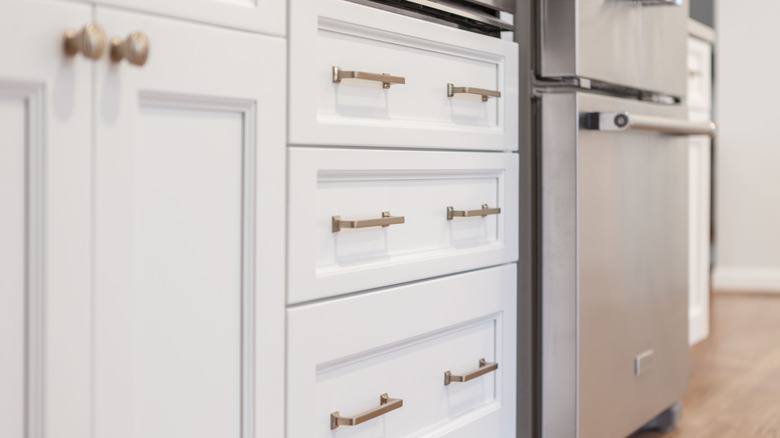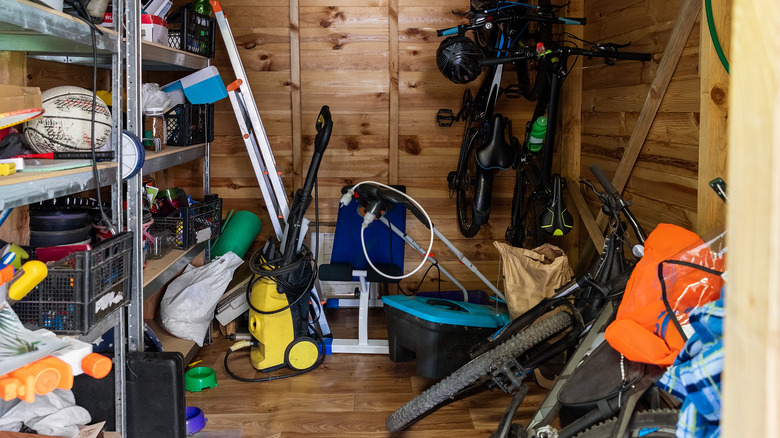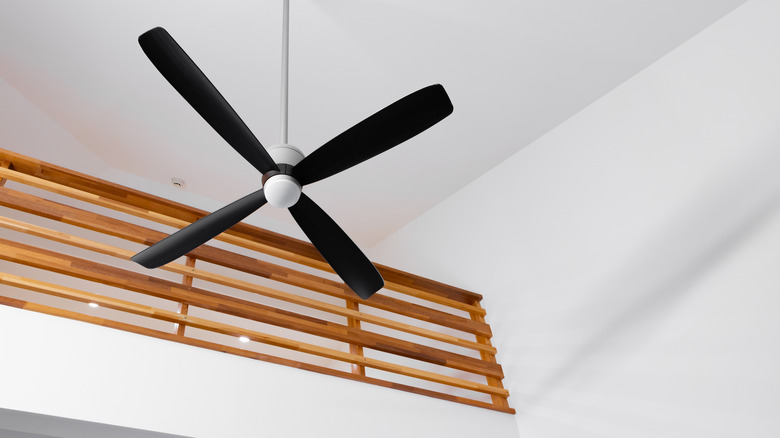What Stays And What Goes When You Buy Or Sell A Home?
You've found the home of your dreams. The bones of the house are solid, the rooms inviting. You can picture your furniture arranged just so. The light fixtures and rugs are perfect, as is the cabinetry ... and you even like the curtains! You're ready to move in, but buyer beware: Before the property transfers, buyers need to be certain of what –- exactly –- they are getting in terms of what stays with the house and what can be removed.
Much of this process has to do with a person's expectations; most often buyers have walked through the house looking its best with everything in place. Lawyers.com addresses this, indicating that in general items that are built-in (like bookshelves) or permanently attached (like cabinets) are considered "real property," and remain with the house. "Personal property" refers to items like furniture, accessories, and artwork, and here the expectation is that these items will be removed by the seller.
Things that stay
The general rule is that things permanently attached to a house stay, and this covers a wide variety of items. Built-in bookshelves and cabinets, for example, are considered part of the home, since they finish a space rather than leave a bare wall, says Bankrate. Systems integral to the space such as security alarms and smoke detectors, while technically removable, should stay as well. Decorative items including lighting fixtures, custom window treatments, and hardware like cabinet drawer pulls and doorknobs should also remain, although they may be exempted in the sales contract.
Things that should be kept with the house also include items in the yard — a permanently affixed basketball hoop, for example. A swing set cemented into the ground, a fire pit, and an outdoor shed are also expected to be part of the sale, transferring with the ownership of the house. This goes double for anything planted in the yard. Most often healthy shrubs, trees, and flowering plants such as roses or hydrangeas that have literally put down roots should be left in place, according to Gardens Alive. However, if there is a particular plant that is of great sentimental value, a note or addendum can be filed with the sales contract so the sellers may take the plant with them (if it's determined in advance, and if the buyers agree).
Things that go
The items that should be removed on moving day (or sooner) are all the personal things that make your house your home. This includes furniture both large and small -– from sofas, beds, dining room tables, and armoires, to occasional tables and lamps. Consider accessories from the practical (soap dish) to the decorative (wall art). Books, of course, should be removed, as well as linens, dishes, and pots and pans. Take your houseplants, too. The list can get pretty long, but the basic rule is that anything not "nailed down" should be moved out to the next home, given to friends, donated, or thrown away.
Clothing, shoes, and all sports and hobby equipment from skis to bowling balls, game tables, and pool tables should all be on the list to be removed. Additionally, this general rule applies not only to the house but also to the basement, storage areas, and garage. Coldwell Banker points out the garage is often the hardest area to pack up simply because so many household items are stored there –- sometimes including unwanted stuff (old toys or clothing) and hazardous items (chemicals or old paint). Nevertheless, everything should be removed — don't leave your things for the new owners to deal with.
Maybe stay/maybe go
And that brings us to the gray areas that should be addressed in your sales agreement. First, consider appliances. While refrigerators, dishwashers, and stoves of course can be moved, the general expectation is that they stay with the house. But as Mortgages.com points out, buyers should not assume an item stays. That's why the sales contract should have a checklist that clearly indicates what will/will not remain. The kitchen is just the starting point. Decisions should also be made regarding appliances such as the washer and dryer, window-mounted air conditioner, water softener, and more.
Then there are the fixtures within the house, and these also include items that are technically removable but also should stay. A list might include a satellite dish, mounting frame for a big-screen TV, gas grill, ceiling fan, curtains and blinds, and towel racks. Rocket Mortgage offers a way to determine if an item is real property or a fixture, but cautions that despite determining whether an item is one or the other, disputes between buyer and seller do occur.
Communicate and negotiate
Most homebuyers assume what they see is what they get in terms of buying. Sellers may not share that view, however, when it comes to top-of-the-line appliances or an antique chandelier that has significance to the sellers. The Washington Post illustrates how at a certain point, it doesn't even matter that an item is defined as a permanent or semi-permanent part of the house -– the sellers want it, and the buyers expect it. The New York Times indicates that sometimes the disagreement scuttles the entire transaction.
A better way to go is to ask and then negotiate for what you want. Real Estate Witch indicates there are any number of things a buyer can claim during the process, from furniture to yard decorations. Forbes agrees, noting that often sellers don't even want items such as air filters or patio furniture as they move on to their next home.
The power of the walkthrough
Before a situation becomes embarrassing at best and hostile at worse, work with a good real estate agent who knows the pitfalls of disagreements or unclear communication when it comes to property details. Here are a couple of areas to help guide sellers on what to leave, and to help buyers protect their investment in their new home.
Almost every real estate contract refers to a last-minute walkthrough. This is the chance to ensure the contract is followed to the letter, and more, and that there are no surprises when moving in. The Balance has a good checklist for the mechanical aspects of the house: During the final walkthrough, buyers should turn on all the faucets and check for leaks under the sink, and turn on and off all the appliances and lights, as a few examples. However, a walkthrough can also ensure that the stove sold with the house is still in place, likewise the washer and dryer, and all the other items detailed in the sales contract.





